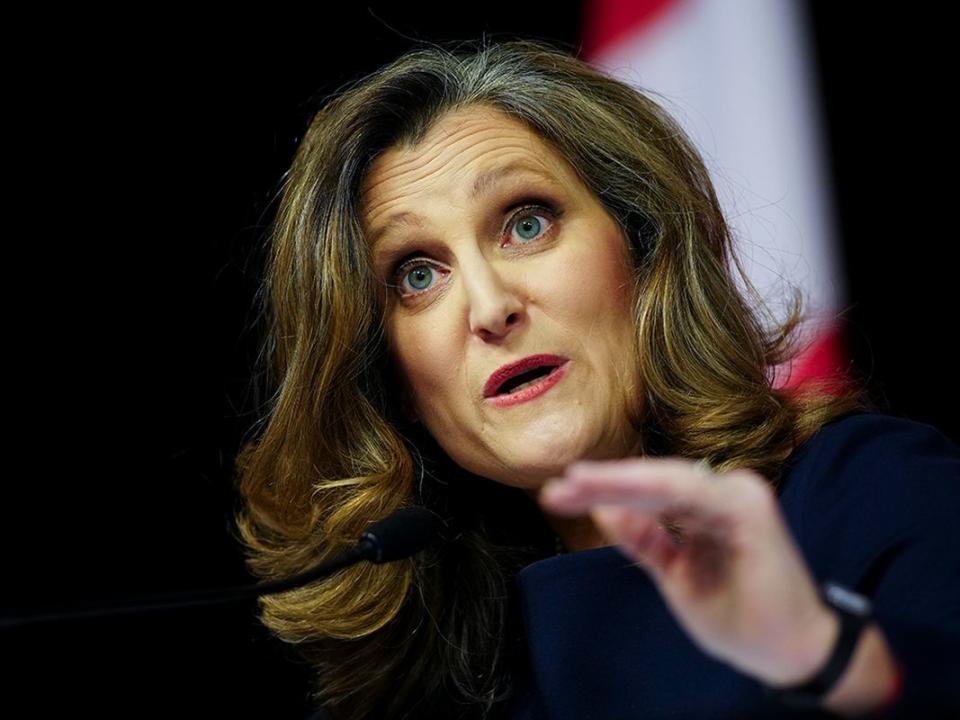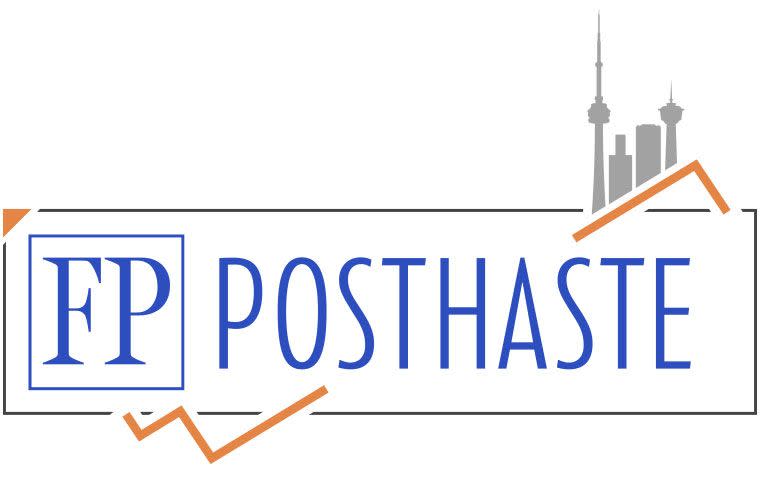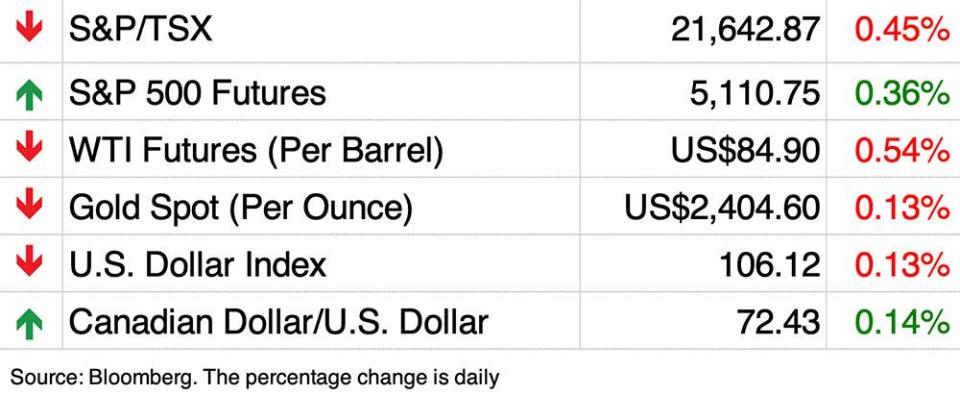Posthaste: 4 charts that tell you what you need to know about Canada's budget 2024


Prime Minister Justin Trudeau hit the trail to make a series of pre-budget announcements, mostly on housing, that left some wondering what was left to be said when the federal budget 2024 was released on Tuesday. It turned out, the Liberals still had some surprises in store for Canadians and businesses.
Here are four charts that break out some of the highlights in the new budget.

The deficit
Ottawa was under pressure in this budget cycle to hold the line on the deficit. Finance Minister Chrystia Freeland accomplished that, projecting a shortfall of $40 billion for the 2023-24 year, slightly better than the $40.1 billion deficit projected in the fall economic statement (FES).
“To achieve this, however, the government introduced several new taxes after … new spending was rolled out in recent weeks,” Rachel Battaglia, an economist at Royal Bank of Canada said in a note.
Looking out over the next five years, the deficits fall deeper in the red than the FES projections.
“Moreover, the projection shows no plan to balance the fiscal book on the projection horizon,” Charles St-Arnaud, an economist with Alberta Central, said in a note following the budget’s release.
Instead, Ottawa committed to reducing the deficit as a share of gross domestic product.
“A sub-one per cent deficit-to-GDP ratio from 2026-27 onwards is the official commitment,” National Bank of Canada economists said in a note.
Many economists criticized Ottawa over the past few years for spending at levels that helped to stoke inflation, but St-Arnaud doesn’t think this budget stirs that pot.
“With the overall deficit virtually unchanged, the budget has no important impact on the Bank of Canada’s fight against inflation,” St-Arnaud, said, and won’t be a factor in the central bank’s next rate decision on June 5.

The cost of debt
“Interest cost pressures will continue to challenge the government in the coming years,” Toronto-Dominion Bank economists led by Beata Caranci said Tuesday.
Budget 2024 estimates that for each dollar of revenue, 10 cents will go to pay for debt. Debt charges are expected to rise to 1.6 per cent of GDP in 2023-24 from 1.2 per cent in 2022-23 and climb to 1.8 per cent of GDP in 2024-25 — roughly double the rate recorded before the pandemic, TD said.
The budget also revealed other startling truths about the cost of Ottawa’s debt.
“The feds expect to spend more servicing the public debt this fiscal year than will be transferred to the provinces via the crucially important Canada Health Transfer — the first time in over a dozen years interest trumps regular CHT cash,” said the National Bank of Canada economists.
By the 2028-29 fiscal year, the TD team estimates that debt charges will total approximately $64.3 billion. “That’s $3.6 billion more than expected just six months ago,” they said.
Although the Bank of Canada is expected to start cutting interest rates this year, possibly in June, the TD economists think the relief from lower borrowing costs will be less than hoped for if rates stay higher for longer.

GDP outlook
Canada’s budget 2024 declared the threat of recession done and dusted.
“Canada has avoided the recession that some had predicted,” said the budget document, noting that the economy performed better than expected to start the year. The budget forecasts first-quarter growth of 3.5 per cent annualized, basing its projection on GDP data for January of 0.6 per cent and a flash forecast from Statistics Canada of 0.4 per cent in February.
“They jumped to conclusions, in my view, on the idea of a soft landing,” Desjardins Group chief economist Jimmy Jean said in an interview with Financial Post’s Larysa Harapyn. “We just had a 6.1 per cent unemployment rate in Canada.”
Jean also said the budget “doesn’t take into account” the recently announced cuts to the numbers of non-permanent residents that will be allowed into Canada over the next three years.
“We think it’s going to have a material impact on the Canadian economy in 2025-26,” Jean said.
The Department of Finance surveys private-sector economists to build an economic outlook for the budget years ahead.
Those economists, surveyed in March 2024, estimated real GDP of 0.7 per cent this year, “weighed down by the effects of past interest rate increases” and 1.9 per cent in 2025, the budget said.
Some think those estimates are too modest.
The Bank of Canada, for example, forecast in the April Monetary Policy Report growth of 1.5 per cent this year and 2.2 per cent next year.
“With the level of GDP in 2024 and 2025 likely higher than expected in the budget, the deficits this year and next are likely to be smaller than projected,” St-Arnaud said.
Others think stronger growth let the government off the hook on spending discipline.
Casting back to better-than-expected growth in the last quarter of 2023 and first quarter of the new year, economists Avery Shenfeld and Katherine Judge at Canadian Imperial Bank of Commerce said in a note that the deficits over the next five years would have been lower “if the government hadn’t used more than all of that elbow room to add new policy initiatives.”
TD economists said: “An upgrade to economic growth partly explains why the government was able to increase spending commitments without breaching its fiscal anchors.”

More revenue
Chrystia Freeland’s latest budget is built around the assumptions of expanding growth and increased revenue — mostly from taxes.
The Department of Finance predicts that revenue will total $465.1 billion in 2023-34, up from $447.8 billion in the previous fiscal year. Revenues are expected to continue to climb, hitting $586.3 billion in 2028-2029.
“In a notable contrast to most of the budgets and fall fiscal updates since the pandemic, this one includes an attempt to raise funds rather than just spend them,” said Stephen Brown, deputy chief North America economist at Capital Economics Ltd.
Ottawa is hoping to raise $6.5 billion this fiscal year (2024-25) by increasing the capital gains tax for corporations and for individuals on gains above $250,000.
The measure is projected to raise $19 billion over the next five years.
Other taxes were announced including a digital services tax and a global minimum tax of 15 per cent on the profits of large multinational corporations, which could lift revenues by $5.9 billion and $6.6 billion, respectively. Increases on nicotine products were also announced that could add $1.7 billion over the next five years to federal coffers.
National Bank economists noted that total government revenue will grow seven per cent in 2024-25, thanks in part to the tax hikes.
Specific sectors such as the grocery industry were spared from an “excess profit” tax as had been suggested during committee hearings last year on food inflation.
“Businesses have at least avoided the increase in corporate income taxes that was rumoured ahead of the budget,” Brown said, but he warned that raising taxes risks discouraging innovation and entrepreneurship.
The budget “hinges on a lot of hope as it relates to growth, as it relates to tax collections,” Desjardin’s Jean said. “Anything that goes wrong … could set us adrift.”
Sign up here to get Posthaste delivered straight to your inbox.

Canada’s inflation rate ticked up in March but stayed within the Bank of Canada‘s target, firming up the case for a June interest rate cut.
The consumer price index rose 2.9 per cent year over year in March, up from 2.8 per cent in February, according to Statistics Canada data released on Tuesday.
The Senate Committee on Banking, Commerce and the Economy will hear from the Parliamentary Budget Officer, Yves Giroux, on alternative minimum tax and the impact on charities
Today’s data: Statistics Canada releases international securities transactions for February. The United States Federal Reserve releases its Beige Book about current economic conditions across the 12 Federal Reserve districts.
Earnings: Equifax Inc., Kinder Morgan Inc., Alcoa Corp.

‘Welcome news’ on inflation raises odds Bank of Canada will cut interest rate in June
Ottawa hikes capital gains tax, amends AMT rules in federal budget 2024
Canada’s capital gains tax hike another blow to productivity, say economists
CIBC tax expert Jamie Golombek goes through some new measures in this year’s federal budget and explains what they could mean for your pocketbook. Watch here.
FP Answers
Are you worried about having enough for retirement? Do you need to adjust your portfolio? Are you wondering how to make ends meet? Drop us a line at aholloway@postmedia.com with your contact info and the general gist of your problem and we’ll try to find some experts to help you out while writing a Family Finance story about it (we’ll keep your name out of it, of course). If you have a simpler question, the crack team at FP Answers led by Julie Cazzin or one of our columnists can give it a shot.
McLister on mortgages
Want to learn more about mortgages? Mortgage strategist Robert McLister’s Financial Post column can help navigate the complex sector, from the latest trends to financing opportunities you won’t want to miss. Read them here
Today’s Posthaste was written by Gigi Suhanic, with additional reporting from Financial Post staff, The Canadian Press and Bloomberg.
Have a story idea, pitch, embargoed report, or a suggestion for this newsletter? Email us at posthaste@postmedia.com.
Bookmark our website and support our journalism: Don’t miss the business news you need to know — add financialpost.com to your bookmarks and sign up for our newsletters here.

 Yahoo Finance
Yahoo Finance 




